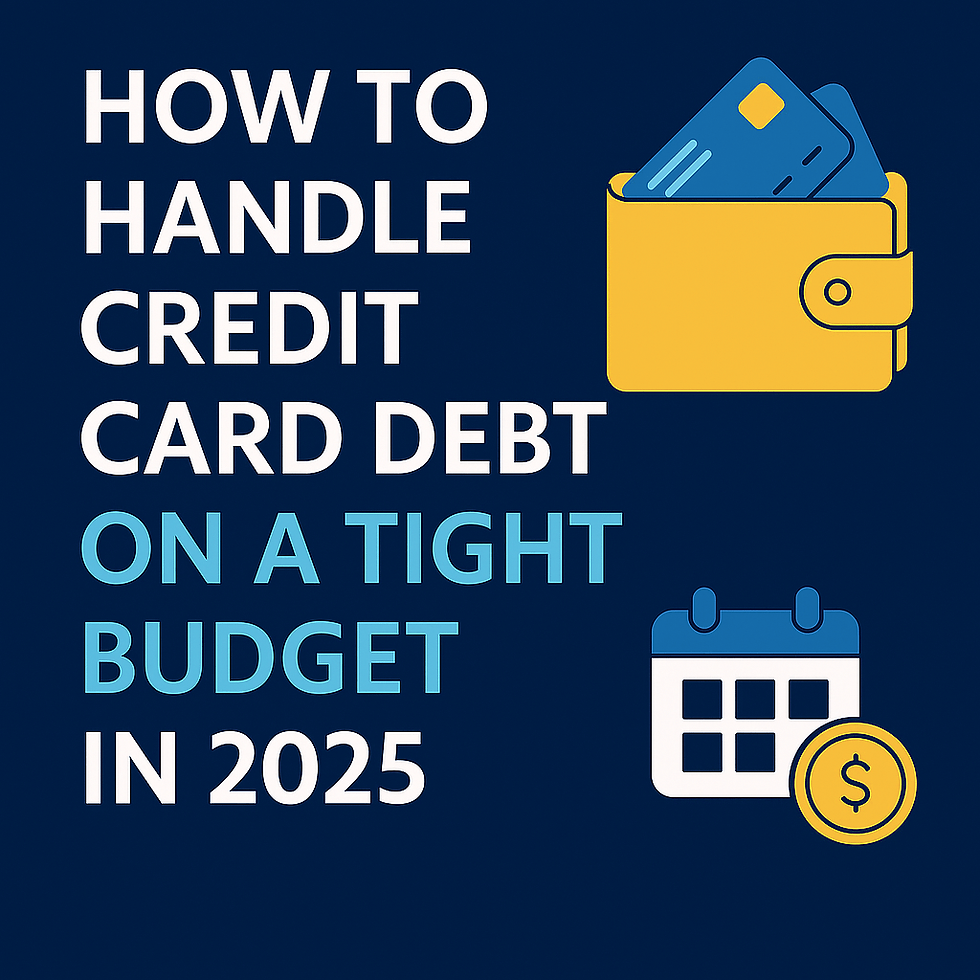Repair Credit: Complete 2025 Guide to Fixing Your Score
- DIY Fix My Score

- Aug 22
- 4 min read
Your credit score plays a huge role in your financial life. Whether you’re applying for a mortgage, renting an apartment, or even getting a new job, lenders and organizations look at your credit history as a sign of reliability. But what if your credit report is full of mistakes, collections, or late payments? The good news is: you can repair your credit. And you don’t need to spend thousands hiring a company to do it.
In this 2025 guide, we’ll break down step-by-step strategies to repair credit legally and effectively — from getting your reports to disputing errors and building positive history.
What Does Credit Repair Mean?
Credit repair is the process of improving your credit score by fixing errors, addressing negative items, and creating healthier financial habits.
The basics of a credit report
Your credit report contains your personal information, credit accounts, payment history, public records, and inquiries. It’s maintained by the three major bureaus: Experian, Equifax, and TransUnion.
What affects your credit score
Payment history (35%): Late or missed payments hurt the most.
Amounts owed (30%): High balances compared to credit limits (credit utilization).
Length of credit history (15%): Older accounts strengthen your score.
Credit mix (10%): Variety of accounts (credit cards, loans).
New credit inquiries (10%): Too many applications can lower your score.
Step 1 – Get Your Credit Reports (Free Every Year)
The first step to repairing credit is knowing what’s on your report.
You’re entitled to a free credit report every 12 months from all three bureaus via AnnualCreditReport.com. In fact, as of 2025, you can request free reports weekly.
Look for:
Incorrect balances
Accounts you don’t recognize
Duplicate collections
Missed payments that aren’t accurate
Even small mistakes can drag your score down.
Step 2 – Identify Negative Items
Once you have your reports, highlight all the negative marks.
Late payments
If they’re accurate, you can try negotiating a goodwill adjustment with the lender.
Collections
Collections accounts damage your score, but you may be able to negotiate a pay-for-delete agreement or dispute inaccurate records.
Charge-offs
These are serious but still worth addressing. Sometimes, settling them for less than owed is possible.
Step 3 – Dispute Errors Legally
This is where credit repair companies often charge big fees — but you can do it yourself.
How to write a dispute letter
Send a letter to the credit bureau identifying the error and providing evidence. State clearly why the information is incorrect and request removal or correction.
Timeframe for bureaus to respond
Under the Fair Credit Reporting Act (FCRA), bureaus must investigate within 30 days of receiving your dispute.
Tips for strong disputes
Always keep copies of your letters and evidence.
Send disputes via certified mail.
Focus on factual errors (wrong dates, duplicate accounts, balances).
Step 4 – Pay Down Debt Strategically
Credit utilization is the second-biggest factor in your score.
Credit utilization ratio explained
If your total credit limit is $10,000 and you owe $5,000, your utilization is 50%. Experts recommend keeping it under 30%, ideally under 10%.
Debt payoff methods
Snowball Method: Pay off smallest debts first for quick wins.
Avalanche Method: Pay highest-interest debts first to save money long-term.
Both approaches improve your score, but avalanche saves more on interest.
Step 5 – Build Positive Credit History
Repairing credit isn’t just about removing negatives. It’s about adding positives.
Secured credit cards
These require a deposit but are easier to qualify for. Use them responsibly to build history.
Authorized user accounts
If a friend or family member with good credit adds you to their account, their positive history can boost your score.
On-time payments strategy
Set up autopay reminders. Even one missed payment can set you back months.
DIY vs Paid Credit Repair Services
Should you pay someone to repair credit?
DIY Credit Repair: Free or low cost. Full control. Requires time and learning.
Paid Services: Can save time, but often expensive ($79–$150/month). Some companies use the same dispute templates you can access yourself.
👉 If you want results without the cost, DIY is often the smarter choice — especially with tools like dispute letter templates and worksheets.
How Long Does Credit Repair Take?
Patience is key.
Small errors: 30–60 days after disputes.
Moderate issues: 3–6 months with steady payments.
Serious negatives: 12–18 months of consistent effort.
Remember: your credit didn’t get damaged overnight, so it won’t be fixed overnight.
FAQs About Credit Repair
Q: Can I really remove collections from my report?
A: Yes, if they are inaccurate, duplicate, or if you negotiate a pay-for-delete.
Q: Does credit repair hurt my score?
A: No — disputes and corrections can only help. The process itself doesn’t damage your score.
Q: What’s the fastest way to repair credit?
A: Pay down high credit card balances, dispute clear errors, and build positive accounts with secured cards or authorized user status.
Repairing credit in 2025 is absolutely possible. By checking your reports, disputing errors, paying down debt, and building positive history, you can see significant improvements in just a few months.
The key is consistency — and knowing the legal tools available to you.
👉 Ready to take control? Our DIY Credit Boost Kit includes 125+ dispute letter templates, step-by-step guides, and trackers so you can repair credit fast without hiring an expensive company.
Start repairing your credit today — your financial future depends on it.





Comments